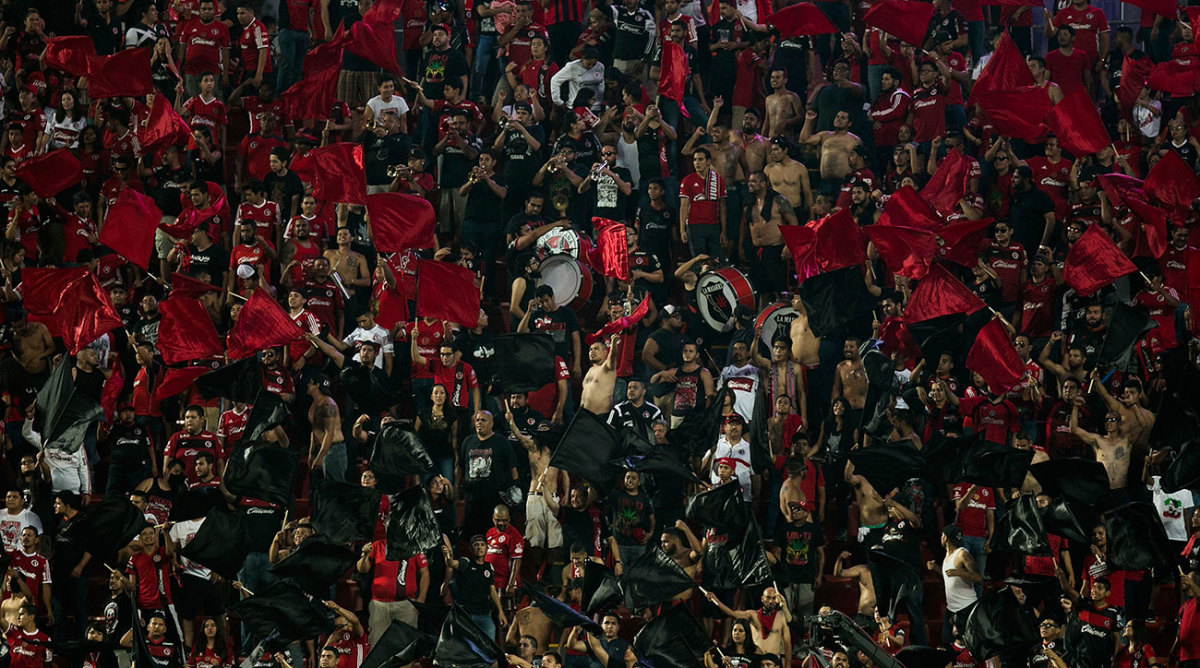In new documentary, the astounding rise of Club Tijuana explored in full

Three years ago, film director Chris Cashman got a midnight call from his production partner Eddie Cahan. He let it go to voicemail. When Cashman finally listened to that voicemail later, he heard what sounded like a large crowd of people, a band playing in the background, and Cahan’s voice saying he had an investor that wanted to make a movie about Xolos.
“What, like, gangsters?” Cashman thought, assuming that Cahan had said “Cholos.” Cashman was so confused by the call that he didn’t even get back to Cahan until weeks later.
When he did, he finally got the full story: In seeking out investors for Cashman’s next project, Cahan was introduced to an immigration lawyer named Murray Hilts. The two went out to a concert together, and at that concert Hilts made his pitch: Make a documentary about Club Tijuana (nickname: Xoloitzcuintles, or Xolos), an upstart Mexican soccer club which, at that point, had just won the 2012 Apertura championship in LigaMX. Hilts, a Xolos fan, said he would finance it.
MLS commissioner Don Garber opens up on the future of league expansion, more
Fast forward three years to the present, and Club Frontera, Cashman’s documentary about the rapid rise of Club Tijuana, is touring film festivals worldwide (including the Kicking & Screening festival in New York last week). At an hour and a half, the doc packs more than enough details to give you a granular look at the club’s rise to the top of LigaMX, from the perspective of fans, players, and ownership. But beyond that, the film also explores how the successes of a brand-new soccer team can change the perception of a city that, in the eyes of many, is still known for violence and drug problems. Even if you’re already familiar with the story of Tijuana the city or Club Tijuana the soccer team, chances are you’ll learn something from Cashman’s film...which is why it’s pretty amazing that Club Frontera is Cashman’s first documentary, and also his first significant experience with the world’s most popular sport.
“I knew absolutely nothing about soccer before making the film,” Cashman told SI.com. “I knew about the Los Angeles Galaxy, but I’ve never been to a game. I mostly know about them because the local news covers them.”
Now a producer for Club Frontera, Cahan’s level of experience in the game was roughly similar. But as soon as the pair traveled from their homes in San Diego to see a game across the border at Estadio Caliente, it became clear that this was a story worth telling.
“We were completely amazed at what was going on,” Cahan said. “I’m in love with the game now because of it. It’s such a great sport and what it’s doing for the community in Tijuana is exceptional.”

Club Frontera tells the story of Club Tijuana from a few different perspectives, but the one of most interest to U.S. national team fans is that of Alejandro Guido, a member of various U.S. youth teams who exactly represents a key demographic the club is in a unique position to attract: Mexican/American dual-nationals.
Guido, who lived in Tijuana while attending high school in San Diego and played for teams on both sides of the border growing up, serves as a fitting focal point. The club prides itself on its family atmosphere, and Guido’s arrival there after trials overseas is shown to be the move that kickstarted his young career.
“I always wanted a club for me to support, to be my own, and until Xolos came that didn’t really exist,” Guido told SI.com. “Now we have so many youth players at Xolos now where I talk to them and they say they’re from Sacramento or LA or San Diego.”
Cashman also got numerous other members of Tijuana’s U.S. national team contingent to talk about their experiences with the club in the film, including midfielders Greg Garza and Paul Arriola, and defender Edgar Castillo. U.S. national team coach Jurgen Klinsmann makes a handful of appearances, as does current Xolos head coach and former Mexico national team boss Miguel Herrera.
Roadmap to Russia: The USA's 2018 World Cup qualifying Hexagonal task
But for as much soccer star power exists in the film the real power of it comes from the stories that take place just off the field. In particular, Cashman spends a lot of time with a Tijuana painter and mural artist known simply as Mode, who is responsible for many of the tifo banner displays shown by the club’s most ardent supporters.
However, Cashman takes great pains to show that Mode is far from the stereotypical picture of a soccer hooligan. In fact, he’s shown to be the furthest thing from it: A loving father and husband, and a talented artist that the government contracted to paint a section of the city’s canal.
“I didn’t want to make a sports documentary. I was very adamant about that, ” Cashman said. “I love the culture of Tijuana. I married into it. I have seen what the club has done for the people there. In the film, I really wanted to show that extreme fan, and also how his art and life mix with sport. How do I create this story and get these characters in there?”
In that sense, it’s mission accomplished. Cashman’s film includes no shortage of characters whose lives have been changed by the rise of Club Tijuana, and the sheer variety of their stories combines to paint a clear picture of what the club has done for the community. Tijuana, once known primarily for negative reasons, has an undeniably positive story to tell. Club Frontera does so in admirable detail.
Club Frontera is currently touring film festivals worldwide. Go to the film’s official site for more information about screening dates and times.
